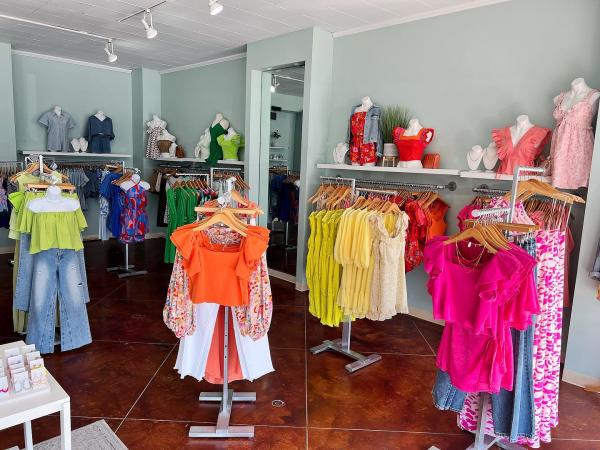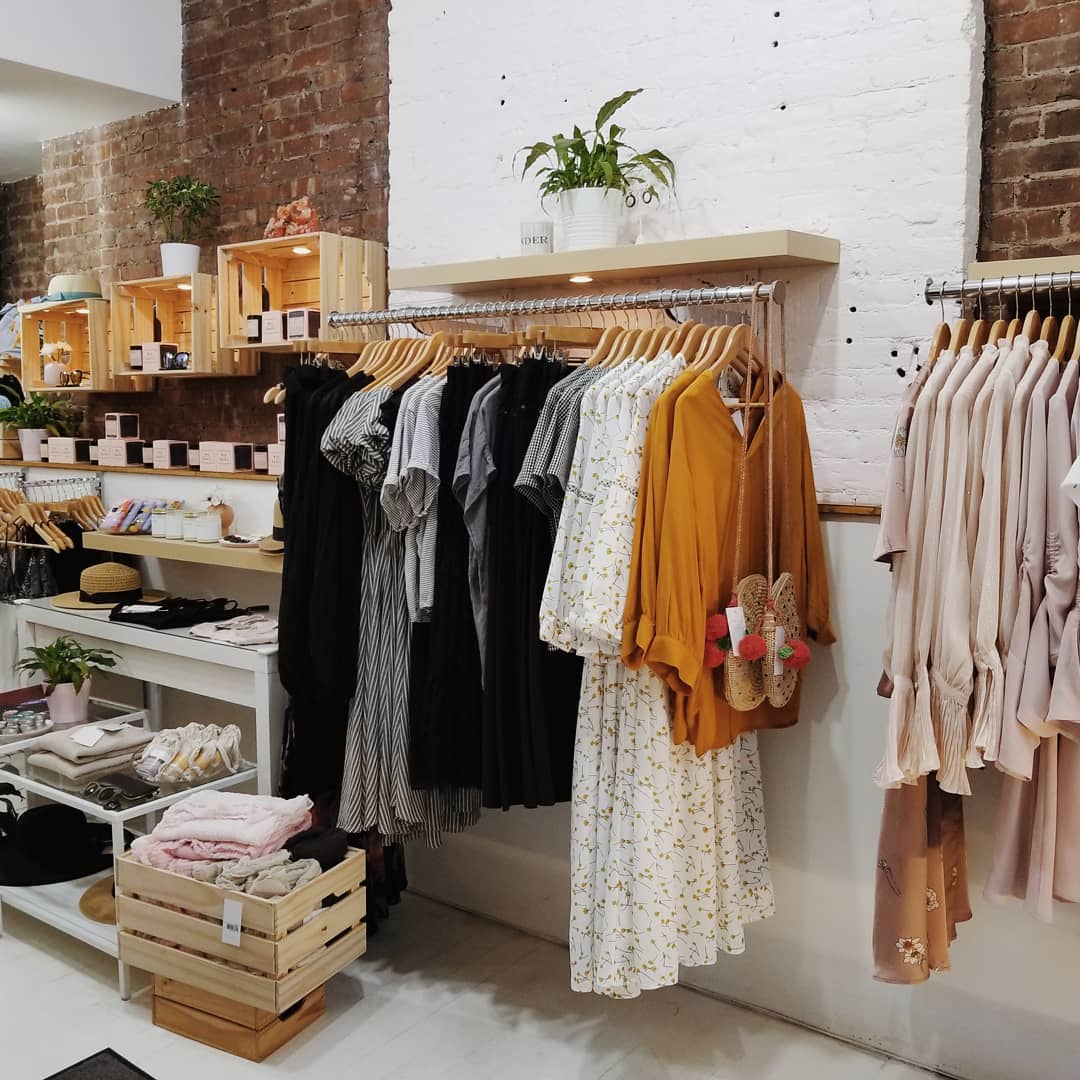The Influence of Social Media on Today's Boutique Fashion Trends
The Influence of Social Media on Today's Boutique Fashion Trends
Blog Article
Lasting Fashion: Exactly How Eco-Friendly Garments Is Forming the Future of Design
As the garment industry faces enhancing examination over its ecological effect, the rise of lasting style uses an encouraging alternative that aligns design with ecological obligation. Utilizing ingenious products such as plant-based textiles and recycled fibers, along with advanced techniques like electronic and 3D printing, designers are redefining what it means to be stylish in the modern-day age. Concurrently, the growing appeal of upcycling and second hand society is cultivating a shift towards a round economy. Yet, exactly how does this motion genuinely affect the future trajectory of style, and what obstacles exist in advance in its extensive adoption?
Innovative Lasting Materials
As the fashion industry grapples with its environmental influence, ingenious sustainable materials have actually emerged as a vital remedy for minimizing environmental impacts. These products not just minimize dependency on fossil gas but also minimize hazardous pesticide usage and water intake.
In enhancement to plant-based products, innovations in biofabrication have actually led to the advancement of lab-grown fabrics. Mycelium natural leather, originated from mushroom roots, offers a functional and biodegradable option to pet leather. Its production leads to significantly reduced carbon discharges and water use, making it a more sustainable option for stylist seeking to align with environment-friendly practices.
Recycled products are also acquiring traction, with polyester made from recycled plastic containers standing for a considerable breakthrough. This innovation not just draws away plastic waste from seas and landfills yet additionally reduces energy consumption compared to creating virgin polyester. With each other, these products highlight the potential for a more lasting style market, leading the way for ecologically mindful style and manufacturing.
Eco-Conscious Production
Building on the developments in lasting materials, the apparel industry is additionally re-evaluating its manufacturing processes to further minimize ecological influence. Trick strategies consist of minimizing water usage, minimizing carbon exhausts, and removing hazardous chemicals. By taking on closed-loop systems, suppliers aim to recycle water and energy efficiently, dramatically decreasing waste. The combination of renewable resource resources, such as solar and wind power, right into manufacturing facilities better reduces dependence on nonrenewable fuel sources.
An additional vital facet is the decrease of harmful chemicals typically used in dyeing and finishing textiles. Eco-conscious makers are moving in the direction of plant-based dyes and waterless dyeing technologies, which not only safeguard neighborhood ecosystems but likewise improve employee security. Innovations like digital printing lower material waste and energy intake, offering a cleaner alternative to standard approaches.
In addition, openness and traceability have actually ended up being extremely important. With the development of blockchain technology, companies can now provide detailed insights right into their supply chains, making sure honest and eco-friendly techniques at each action. This transparency constructs customer trust and urges brands to preserve high sustainability criteria. As the need for eco-conscious products expands, suppliers are obliged to introduce, ensuring that the future of style is both lasting and fashionable.
The Increase of Upcycling
Upcycling, a transformative technique in sustainable style, involves creatively repurposing thrown out materials right into brand-new, high-quality products. This ingenious see it here technique not just decreases waste but additionally diminishes the demand for resources, consequently reducing the environmental impact of garments manufacturing. By reconstructing and reimagining existing things, developers and fashion brand names are able to instill originality into their collections while advertising ecological responsibility.

Additionally, the upcycling see here movement has encouraged tiny organizations and independent designers, that commonly lead in development because of their agility and creativity. By capitalizing on the bountiful schedule of extra materials, these entities add to a circular economy, showing that fashion can be both trendy and sustainable. Via upcycling, the industry takes considerable strides towards an extra responsible and mindful future.
Thrift Culture's Influence
The growing thrift society considerably improves the landscape of lasting fashion, emphasizing the relevance of mindful intake. This cultural change urges consumers to welcome previously owned clothing, therefore check my source decreasing the need for new garment production and decreasing environmental influence. Second hand buying not just expands the lifecycle of clothing however additionally reduces the carbon impact linked with production, transferring, and dealing with clothing.
An essential element of thrift culture is its democratization of style. By providing a large array of styles from various ages at economical costs, thrift shops make style easily accessible to a broader audience. This availability promotes a feeling of uniqueness and creativity, as consumers mix and match special items to curate customized wardrobes without contributing to the fast style cycle.
Furthermore, second hand society promotes circularity in style, straightening with the concepts of a round economic situation. By recirculating garments, the cycle of waste is interrupted, and resources are conserved. This practice supports a change from a linear "take-make-dispose" design to a more sustainable framework. As more designers and consumers embrace thrift society, the fashion business is compelled to adapt, integrating lasting techniques to meet the growing demand for eco-conscious alternatives.

Future Trends in Fashion
Style's development is progressively shaped by sustainability-driven campaigns and technical developments. One prominent fad is the surge of electronic style, where virtual garments can be worn in enhanced fact environments, dramatically reducing textile waste.
Moreover, the integration of blockchain innovation uses brand-new opportunities in openness and traceability, enabling customers to validate the sustainability credentials of their apparel. boutique fashion. This makes sure liability in supply chains and advertises moral sourcing practices. 3D printing is yet another development that guarantees to reinvent producing procedures by allowing on-demand production, consequently lowering excess supply and waste
In addition, the growth of bio-fabricated products, such as lab-grown natural leather and plant-based fabrics, offers lasting alternatives to traditional materials. These developments decrease reliance on pet products and resource-intensive crops. As these technologies mature, they are positioned to change the style landscape, merging design with sustainability. The future of style, as a result, hinges on a seamless mix of modern technology, innovation, and ecological responsibility.
Final Thought
The improvement of the apparel industry through lasting methods indicates a crucial shift towards environmental responsibility. The combination of innovative products, eco-conscious manufacturing strategies, and the embracement of upcycling and thrift culture underscores a dedication to decreasing eco-friendly footprints. As these techniques gain energy, they redefine the industry's story by prioritizing moral and sustainable choices. This development not only lines up style with eco-friendly sustainability however additionally sets a criterion for future trends concentrated on obligation and development.
As the fashion industry deals with enhancing analysis over its ecological impact, the increase of sustainable style provides an encouraging choice that aligns style with environmental duty.As the fashion sector grapples with its ecological influence, innovative sustainable materials have arised as a crucial service for minimizing eco-friendly impacts. With each other, these products highlight the possibility for a more lasting fashion sector, paving the method for ecologically mindful style and manufacturing.
Building on the technologies in sustainable materials, the fashion sector is additionally re-evaluating its production procedures to even more reduce environmental impact. boutique fashion.Upcycling, a transformative practice in sustainable style, includes artistically repurposing discarded materials into brand-new, high-quality items
Report this page